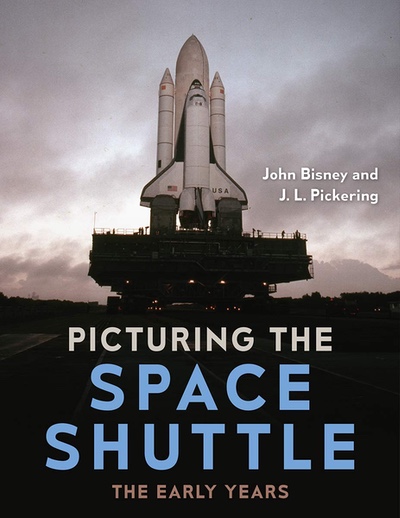Review: Picturing the Space Shuttle: The Early Yearsby Jeff Foust
|
| A couple images from events at KSC in the 1970s feature a young congressman who represented the area and had taken an interest in the nascent shuttle program: Bill Nelson. |
As with their previous books, Bisney and Pickering sought to find images that had not been widely published before. “You might think it would be easy to put together a photo book on the Space Shuttle. What’s difficult, however, is to do so using largely unseen images,” Pickering writes in the book’s introduction. Fortunately, he writes, many of the images from that era have yet to be digitized, languishing in various archives, including those of collectors. “I am confident that most of these photos qualify as seldom seen or never-before-published.”
That seems to be an accurate assessment. Those images start with concepts for reusable launch vehicles in the mid-1960s that evolved into what became the shuttle, followed by photos documenting the shuttle’s development and testing. One chapter covers the selection and training of the 1978 astronaut class, which included the first female and Black astronauts. The final chapters cover the first four shuttle missions, concluding with STS-4 in July 1982 that wrapped up—at least in the view of NASA at the time—the test phase of the shuttle program.
A book like this doesn’t necessarily reshape the historical account, but instead helps fill it out with images both from behind the scenes (like those from the astronaut training program) as well as public ones that had been lost or forgotten but now take on a new perspective. For example, a couple images from events at KSC in the 1970s feature a young congressman who represented the area and had taken an interest in the nascent shuttle program: Bill Nelson. The photos are augmented with images of other artifacts from the era, from covers of press kits and other documents to pin and badges, again helping to fll out the historical record rather than reshape it.
The book’s subtitle of “The Early Years” suggests there will be a future book, or books, chronicling the later years of the program. That would certainly be welcome, particularly if they can again find rarely-seen images of those efforts. Perhaps someday there will be a similar book chronicling the development of the SLS, which has taken longer from announcement to first launch than the shuttle despite using heritage hardware. The challenge there, though, will be to find photos that have not been widely seen before in this area of digital imaging and distribution.
Note: we are using a new commenting system, which may require you to create a new account.
